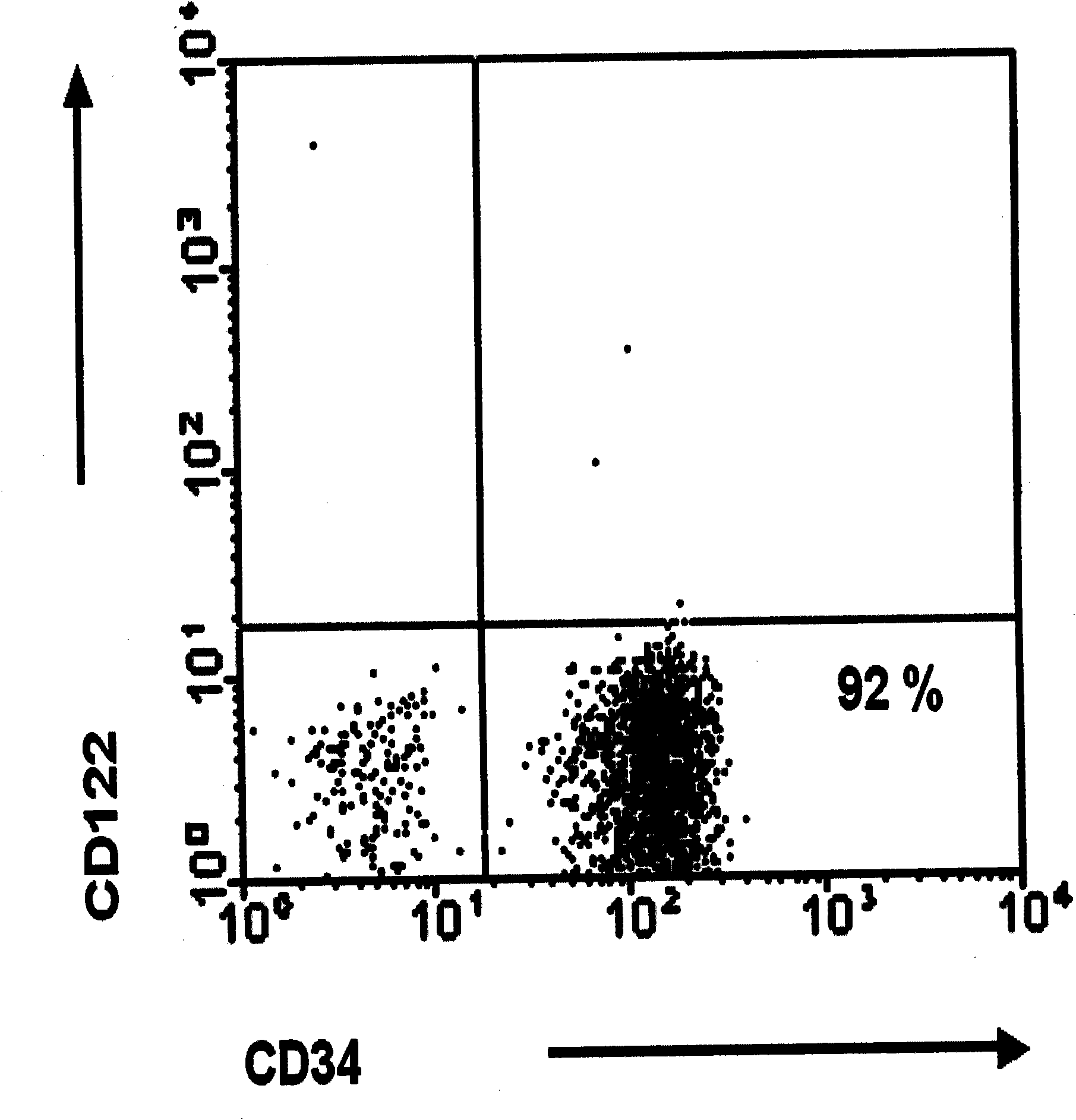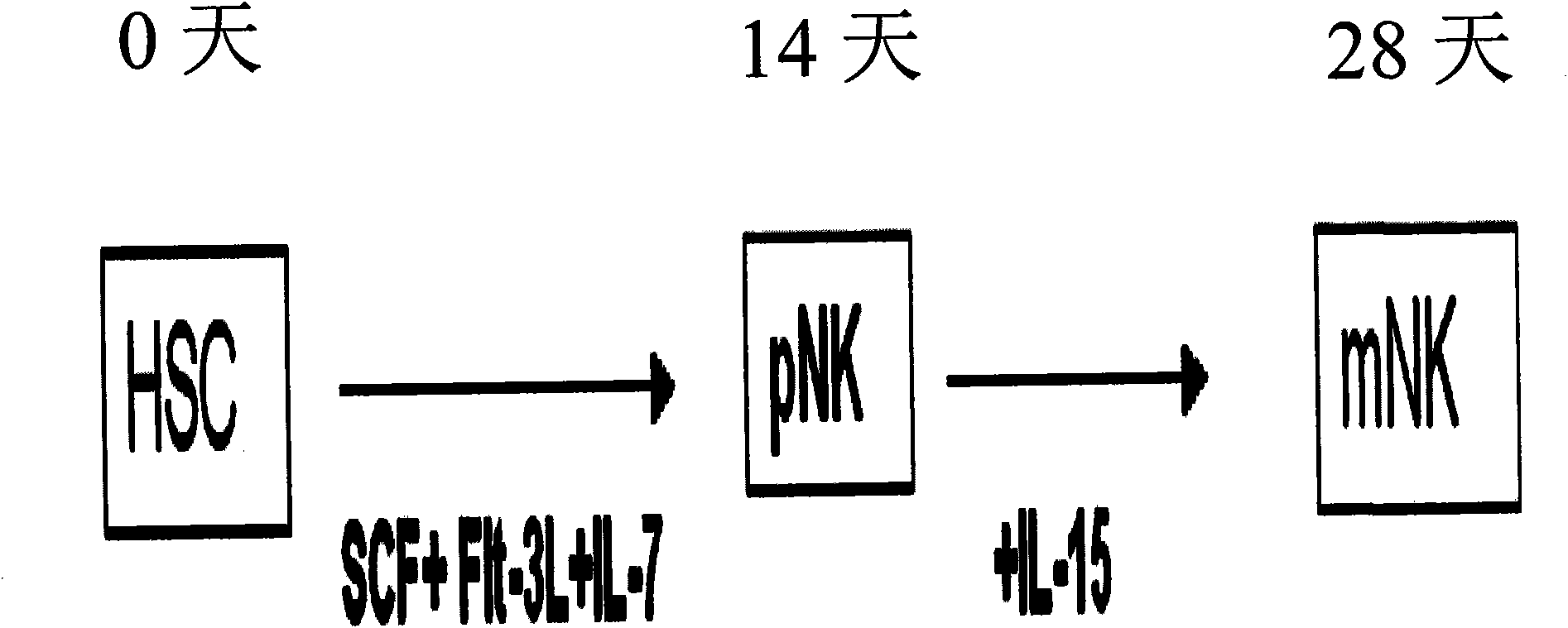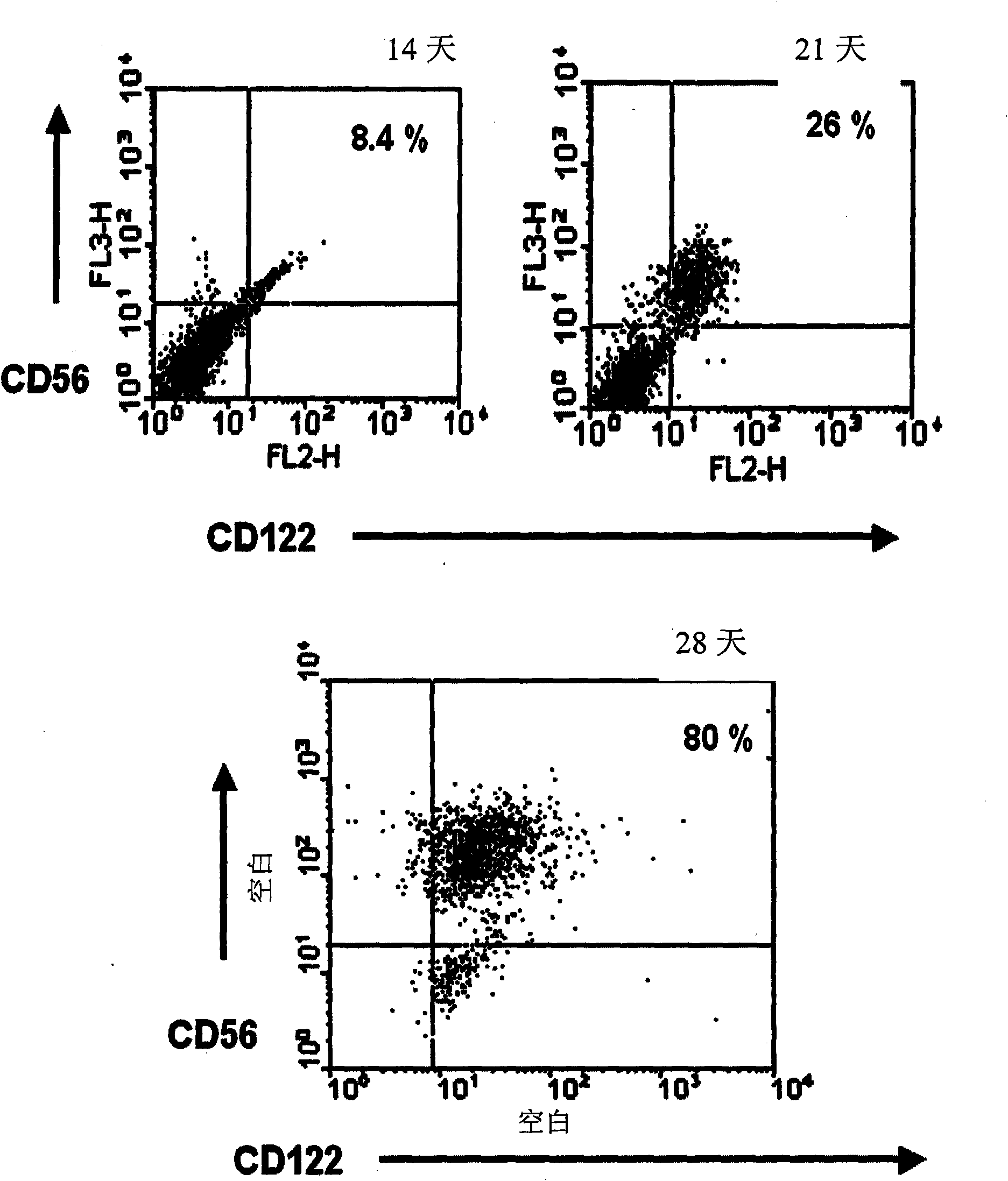An agent for differentiating hematopoietic stem cell into natural killer cell comprising YC-1 or IL-21 and a method of differentiating hematopoietic stem cell into natural killer cell using thereof
A technology of IL-21 and hematopoietic stem cells, applied in the field of natural killer cells, can solve the problem that the mechanism of YC-1's anti-cancer activity has not been disclosed.
- Summary
- Abstract
- Description
- Claims
- Application Information
AI Technical Summary
Problems solved by technology
Method used
Image
Examples
Embodiment 1
[0091] Example 1: Isolation of hematopoietic stem cells from umbilical cord blood
[0092] The umbilical cord blood was provided by the Obstetrics and Gynecology Department of Konyang University Hospital in Daejeon, Korea. Since it was only used for research, it was only diluted with RPMI 1640 (GIBCO-BRL, USA) at a ratio of 2:1. The prepared cord blood was loaded on top of Ficoll-Paque (Sigma, USA), followed by centrifugation (20,000 rpm, 30 minutes) to separate mononuclear cells (MNC). Red blood cells were removed from the harvested cells and the harvested monocytes were labeled with hematopoietic stem cell marker 'CD34 magnetic beads'. Next, CD34+ cells were isolated using MS / RS column and MACS (Magnetic Activated Cell Sorting). The obtained CD34+ hematopoietic stem cells (hereinafter referred to as "HSC cells") were measured to have a purity of 92% ( figure 1 ).
Embodiment 2
[0093] Example 2: Differentiation of umbilical cord blood hematopoietic stem cells to NK cells
[0094] The HSC cells isolated from umbilical cord blood in Example 1 were inoculated into 12-well plates (Falcon, USA), and the wells contained 30ng / ml human factor (PeproTech, USA), 50ng / ml human Flt3L (FMS-like tyrosine acid kinase 3 ligand, PeproTech, USA), 5ng / ml human IL-7 (PeproTech, USA), and 10 -6 M water-based (hydro) SCF (stem cell hydrocortisone, Stem cell Technology, CA) Myelocult complete medium (Stem cell Technology, CA), 1 × 10 per well 6 cells, followed by incubation at 37°C, 5% CO 2 cultured in an incubator for 14 days. After 3 days, half of the supernatant was replaced with fresh medium containing cytokines with the same composition as above. In order to differentiate into mature NK cells (hereinafter referred to as "NK cells"), HSC cells were recovered after 14 days and cultured for another 14 days in the presence of human IL-15 (30 ng / ml, PeproTech, USA). ...
Embodiment 3
[0095] Example 3: Effect of IL-21 on NK cell differentiation
[0096] In order to investigate the effect of IL-21, which is known to promote differentiation and increase activity, on the differentiation of NK cells, during the differentiation process of umbilical cord blood hematopoietic hepatocytes into mature NK cells (mNK) via NK precursor cells (pNK) IL-21 (20ng / Ml, PeproTech, USA) was processed. Cells were cultured in the presence of IL-15, followed by FACS analysis and 51 Cr release analysis.
[0097] IL-21 has the amino acid sequence shown in SEQ.ID.NO:1, and the nucleotide sequence is shown in SEQ.ID.NO:2.
[0098] From the results of FACS analysis, it can be determined that the number of CD56+NK cells in the IL-21 treatment group increased ( Figure 4 and 5 ).
[0099] From 51 As a result of Cr release analysis, it can be confirmed that the killing activity of NK cells treated with IL-21 increased ( Figure 6 ). E:T (effector cells: target cells) was 2.5:1. ...
PUM
 Login to View More
Login to View More Abstract
Description
Claims
Application Information
 Login to View More
Login to View More - R&D
- Intellectual Property
- Life Sciences
- Materials
- Tech Scout
- Unparalleled Data Quality
- Higher Quality Content
- 60% Fewer Hallucinations
Browse by: Latest US Patents, China's latest patents, Technical Efficacy Thesaurus, Application Domain, Technology Topic, Popular Technical Reports.
© 2025 PatSnap. All rights reserved.Legal|Privacy policy|Modern Slavery Act Transparency Statement|Sitemap|About US| Contact US: help@patsnap.com



